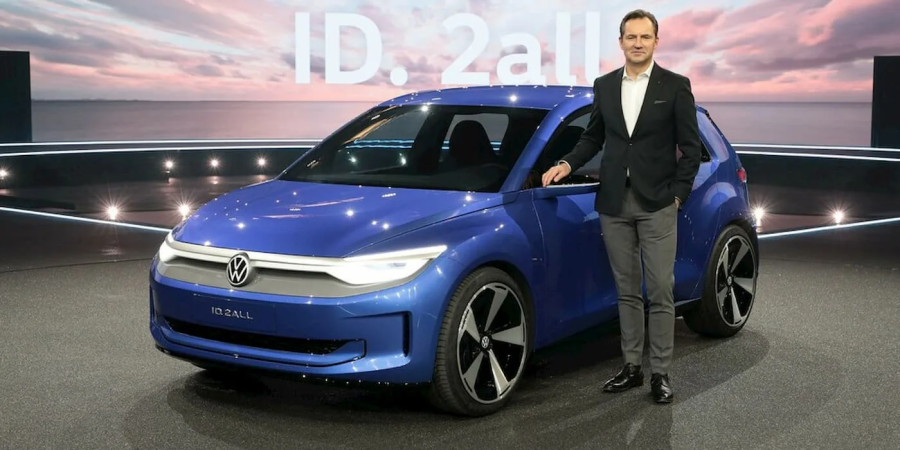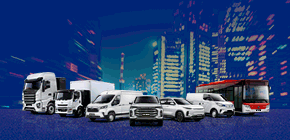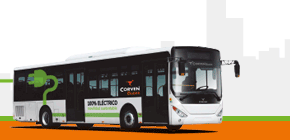Volkswagen has just presented the ID.2all concept. The small EV doubles as a preview of the long-expected low-cost ID.2 and VW’s new design language. The series ID.2. scheduled for 2025, shall be “as spacious as a Golf, as inexpensive as a Polo”. Here’s all we know about the latest iteration.
First, the fact that Volkswagen presented two small electric car concepts within just one and a half years is remarkable. At the IAA Mobility 2021, the carmaker still had the ID. Life on display blended futuristic design and retro references to the Golf I, an icon.
Yet at the time, it became apparent that the concept by then head of design Jozef Kaban didn’t sit well with the VW management under Oliver Blume (Group) and Thomas Schäfer (Brand). So tonight, VW showed a completely new design by Kaban’s successor Andreas Mindt in Hamburg.
By the looks of it, the ID.2all study has little in common with the ID. Life. In the press release, VW speaks of a “friendly face”. Indeed, the ID.2all appears to be smiling thanks to the shape of the lower air intake; the rest of the front looks like a mixture of the usual ID. front and a conventional small car.
Regarding technology, the ID.2all is a front-wheel drive, which again requires a slightly larger motor compartment than, say, the ID.3, contributing to a more conventional look. You could almost think there’s a new Polo there.
This was a conscious decision, as design chief Mindt explains: “The most important value for Volkswagen design is stability.” In his view, this includes value stability, stability of form, reliability and recognisability. “A second central core of the brand is likeability,” explains the designer – and refers to models such as the Beetle and VW Bus, Beetle and ID. Buzz. “Stability and likeability – we have to fulfil these two values 100 per cent.” And, “we also want to create excitement in our customers.”
However, Mindt has not wholly abandoned the Golf I connection, even if it is significantly less pronounced than with the ID. Life. One element of this new design language is the C-pillar design developed for the first Golf. The ID. 2all is the first Volkswagen with a new interpretation of this signature.
“The C-pillar is the backbone of the Volkswagen design. In the ID. 2all, the stability of the C-pillar initially flows from the backbone into the side body elements,” explains Mindt. One of the consequences: Contrary to the current trend in car design, the ID.2all deliberately dispenses with a pronounced shoulder section. According to VW, this gives the entire flank a strong volume and a high degree of independence.
There is another parallel between the ID.2all and the ID. Life from 2021, which has nothing to do with Mint’s work but is the responsibility of Kai Grünitz. It’s the technology. The ID. 2all will utilise the latest evolutionary stage of the modular e-drive kit (MEB). “The ID. 2all will be the first MEB vehicle with front-wheel drive.
We are exploiting the great flexibility offered by our modular electric drive (MEB) platform and will set new standards in terms of technology and everyday usability with the MEB Entry platform,” says the brand’s Board Member for Technical Development.
Small electric car with 166 kW and 450 kilometres range – and enormous charging power
VW states in the announcement it would introduce a “particularly efficient drive, battery and charging technology”. The critical data with the 166 kW front-wheel drive, the standard sprint to 100 km/h in less than seven seconds and the range of up to 450 kilometres according to WLTP are very similar to the specifications for the ID.
Life. At that time, there was talk of 172 kW and, more specifically, 6.9 seconds to 100 km/h. By the way, VW does not mention a battery size for the ID.2all – but 57 kWh were specified for 2021. As minor as the known changes are, the range between 55 and 60 kWh is a likely order of magnitude.
VW’s statement makes us sit up and take notice: The battery is supposed to be able to be charged from ten to 80 per cent in just 20 minutes. If we take the 57 kWh mentioned as the net energy content, 39.9 kWh is needed from ten to 80 per cent. Transferring this energy in 20 minutes would require an average of 120 kW of charging power.
An ID.3 Pro with 58 kWh net only reaches this 120 kW at the peak. For the standard charging process, the ID.3 needs an impressive 35 minutes – making an average of 70 kW. Should VW bring this charging performance into series production (and for the targeted €25,000), it would be an enormous step forward in this vehicle class.
However, the company does not officially provide further details on the battery. In view of this information on the charging power, it remains to be seen whether it is still the LFP cells that former VW Group boss Herbert Diess had promised for the e-small car.
Slightly shorter than a Polo but as spacious as a Golf
For now, all that remains is a look at what is known about the study: with a length of 4.05 metres, the ID. 2all is in the small car segment and keeps enough distance upwards from the ID.3 and Golf – both compact cars are a little over 20 centimetres longer. The electric vehicle is 1.81 metres wide and 1.53 metres tall.
At 2.60 metres, the wheelbase is five centimetres shorter than the ID. Life, but for a four-metre car, it still has good proportions. By comparison: the current Polo generation is 2.5 centimetres longer than the ID.2all but has to make do with a wheelbase of 2.55 metres.
The ID. 2all’s longer wheelbase and the flat interior floor above the battery are supposed to translate into ample space. VW states a cargo space between 490 and 1,330 litres, which exceeds the current Golf 8. However, the 490 litres include not only the boot: 50 litres are allotted to a storage compartment under the rear seat, for example, where the VW designers propose storing the charging cable. The current study does not have a frunk like the ID. Life.
Instead, a unique feature has been seen in this form in Tesla: the ID.2all offers a large, cuboid storage compartment under the actual boot floor – according to the press photos, two beer crates and a hand luggage trolley can be stowed there. The difference to the Tesla solution is that the storage compartment is located behind the rear axle, whereas in the VW, it is exactly between the rear wheels due to the space available. This storage compartment is only possible thanks to the absence of a space-consuming multi-link rear axle.
VW returns to a more conventional operating concept.
Concerning the information Volkswagen has given on the rest of the interior, one has to wait and see what is really included in the €25,000 version and what will only be available in higher trims.
For example, a large panoramic roof, electric massage seats, a head-up display, a 10.9-inch cockpit display and a 12.9-inch infotainment touchscreen with a new menu structure are listed. Which will presumably be part of the standard version: Below the touchscreen, there is a newly developed climate control unit that is said to have illuminated buttons. In the middle of the climate unit, there is a separate rotary roller for volume control.
On the centre console, another rotary pushbutton controls “other vehicle functions”. For example, VW mentions the look of digital instruments. The new multifunction steering wheel is “self-explanatory” – “two rotary rollers on the left and right and two buttons each, that’s it”. So VW has listened to the criticisms – illuminated buttons are replacing the non-illuminated touch sliders, and rotary rollers are replacing the touch elements on the steering wheel. The criticised menu structure is being revised.
“We are transferring the typical Volkswagen virtues to the new world of mobility: top quality and workmanship, outstanding software and digital services with genuine added value,” says Imelda Labbé, Brand Director Sales, Marketing and After Sales. “The focus here is always on the needs and requirements of our customers.”
Development Director Grünitz puts it more soberly. “The production version of the ID.2all will be a fully-fledged electric car for every day of the year. A typical Volkswagen. With enough space and a long range to easily reach its destination even on the long haul,” says the manager. “Thanks to the highly variable MEB, our customers will be able to enjoy state-of-the-art technology in the process, even in the price range of around 25,000 euros. Technology at affordable prices. That is exactly our claim!”





















